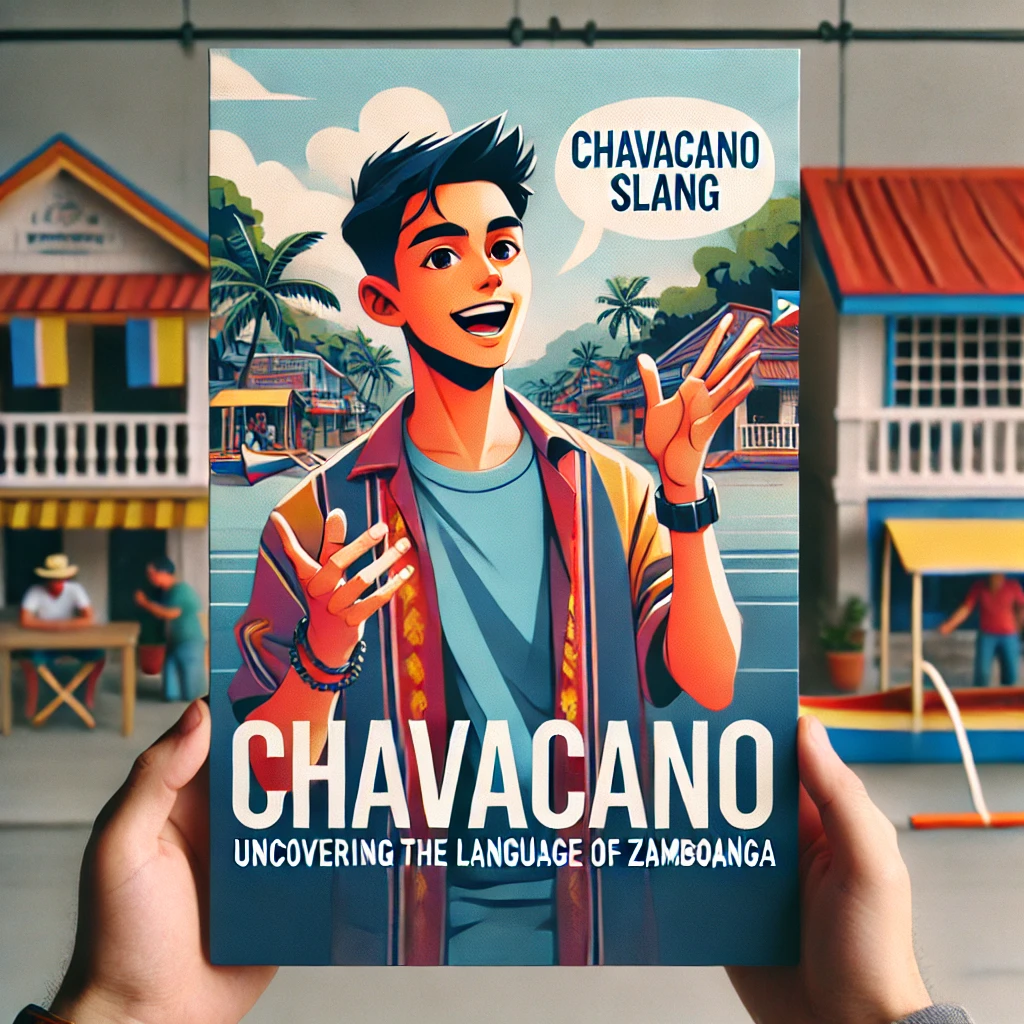Hold onto your wigs, queens, because we’re about to take a deep dive into the colorful, sassy, and utterly fabulous world of Beki language! If you’ve ever found yourself scratching your head (careful with those nails, honey) while eavesdropping on a group of gay men chattering away in what sounds like a secret code, you’re not alone. Beki, also known as Swardspeak or Gay Lingo, is a vibrant and ever-evolving slang used primarily by gay men in the Philippines. But don’t worry, darling, by the end of this blog post, you’ll be serving Beki realness like a pro. So, let’s stop beating around the bush (or should I say, “beating around the bakla”?) and get this party started!
The Origins: From Whispers to Werk
A Brief History Lesson (Don’t Yawn, It’s Fabulous)
Picture this: It’s the 1970s, disco is in full swing, and the LGBTQ+ community in the Philippines is facing more shade than a forest canopy. In this challenging environment, gay men needed a way to communicate freely without fear of judgment or persecution. Enter Beki language, the linguistic equivalent of a glitter bomb explosion.
This slang didn’t just pop out of thin air like a drag queen from a cake. It evolved organically, drawing inspiration from a delicious cocktail of sources:
- English
- Tagalog
- Spanish
- Japanese
- And a healthy dose of pure creativity
The result? A language as diverse and fabulous as the community that created it. Beki became more than just a way to gossip about cute boys without getting caught; it became a symbol of identity, resistance, and fabulosity.
The ABCs of Beki: Linguistic Realness 101
Serving Vocabulary Realness
Now, let’s get down to the nitty-gritty of Beki linguistics. If you thought learning French was hard, honey, you ain’t seen nothing yet! Beki is like a linguistic drag show – always changing, always surprising, and never, ever boring.
Here’s a little taste of some common Beki words to get you started:
| Beki Term | English Translation | Example Usage |
|---|---|---|
| Jowa | Boyfriend/Girlfriend | “Girl, I finally found my jowa!” |
| Sharot | Alcohol | “Let’s go get some sharot, queen!” |
| Pak | Expression of agreement | “Your outfit is on point!” “Pak!” |
| Keri | Can do / Okay | “Can you handle another round?” “Keri, sis!” |
| Charot | Just kidding | “I’m quitting drag… Charot!” |
But wait, there’s more! Beki isn’t just about substituting words; it’s an art form. It involves:
- Word play: Taking existing words and giving them a fabulous twist.
- Backwards speak: Reversing words for added spice (and confusion).
- Pop culture references: Because what’s gay slang without a little Mariah Carey?
- Onomatopoeia: Because sometimes, a well-placed “shookt” says more than a thousand words.
The Evolution: From Underground to Mainstream
Beki Goes Viral (In a Good Way)
Once upon a time, Beki was the secret handshake of the gay community. Fast forward to today, and it’s practically gone mainstream faster than you can say “Yas, queen!” This evolution didn’t happen overnight, though. It’s been a journey, honey, and here’s how it went down:
- 1970s-1980s: Beki is born and raised in the underground gay scene.
- 1990s: Gay characters start popping up in Filipino media, bringing a sprinkle of Beki with them.
- 2000s: The internet explodes, and so does the spread of Beki language.
- 2010s: Social media takes Beki viral, with influencers and celebs getting in on the action.
- 2020s: Beki is everywhere, from memes to mainstream TV shows.
By 2022, you’re as likely to hear Beki terms from your straight bestie as you are from the local drag queen. It’s a linguistic phenomenon that’s sashayed its way into the hearts and vocabularies of Filipinos across the spectrum.
The Impact: More Than Just Words
Linguistic Activism, But Make It Fabulous
Now, before you go thinking Beki is just a bunch of fun words to throw around at parties, let’s get real for a hot minute. This language is more than just a way to spill the tea; it’s a powerful tool for self-expression, community building, and even activism.
- Identity Affirmation: Beki allows gay men to express their authentic selves in a world that hasn’t always been kind.
- Community Bonding: Nothing brings people together like a shared language, especially one this fabulous.
- Visibility: As Beki becomes more mainstream, it brings LGBTQ+ issues into the spotlight.
- Challenging Norms: By playing with language, Beki challenges traditional gender and linguistic norms.
In a society where being LGBTQ+ can still be a challenge, Beki stands as a linguistic middle finger to homophobia and discrimination. It’s a way of saying, “We’re here, we’re queer, and we have our own dictionary, darling!”
The Controversy: Not All Rainbows and Glitter
The Tea is Hot, and So is the Debate
Of course, like any good drama queen, Beki language has its fair share of controversy. Some critics argue that it reinforces stereotypes about gay men or excludes other members of the LGBTQ+ community. Others worry that its mainstream adoption could lead to cultural appropriation.
Here’s a breakdown of the main points of contention:
- Stereotype Reinforcement: Does Beki language play into stereotypes about how gay men should speak or act?
- Exclusivity: Is Beki inclusive of all LGBTQ+ identities, or does it primarily cater to gay men?
- Appropriation Concerns: As Beki becomes more mainstream, are its origins and significance being respected?
- Professional Impact: Could using Beki language in professional settings lead to discrimination?
These are complex issues without easy answers. But one thing’s for sure – Beki continues to spark important conversations about language, identity, and representation in the LGBTQ+ community.
The Future: Beki’s Next Frontier
Crystal Ball Realness
So, what’s next for our beloved Beki language? If we dust off our crystal ball (and honey, it better be Swarovski), here’s what we might see:
- Global Expansion: As Filipino culture spreads globally, Beki might just become the next big thing in international gay slang.
- Academic Recognition: Don’t be surprised if universities start offering “Introduction to Beki 101” in their linguistics departments.
- Tech Integration: Siri and Alexa better watch out – a Beki-speaking AI assistant could be just around the corner.
- Continued Evolution: Like any living language, Beki will keep changing, growing, and serving fresh linguistic lewks.
One thing’s for certain – Beki isn’t going anywhere. It’s here to slay, and slay it shall.
Werking It in Beki
As we come to the end of our fabulous journey through the world of Beki language, let’s take a moment to appreciate this linguistic masterpiece. From its roots in the LGBTQ+ community to its current status as a pop culture phenomenon, Beki has proven itself to be more than just a slang – it’s a movement, a statement, and a whole vibe.
Whether you’re a long-time fluent speaker or a curious newbie, there’s no denying the impact and importance of Beki language. It’s a testament to the creativity, resilience, and fabulosity of the gay community in the Philippines and beyond.
So the next time you hear someone exclaim “Pak!” or ask for some “sharot,” remember – you’re not just witnessing slang in action. You’re experiencing a rich cultural tradition, a form of resistance, and a celebration of identity all rolled into one gloriously glittery linguistic package.
And with that, my darlings, it’s time for me to sashay away. But remember, in the immortal words of Beki speakers everywhere: “Charot lang!” (Just kidding!) The fun never really ends when you’re speaking the language of fabulosity. Now go forth and spread the Beki love!
Disclaimer: This blog post is based on information available up to 2022. Language and cultural practices are constantly evolving. While we strive for accuracy, some information may have changed since then. If you spot any inaccuracies, please let us know so we can serve you the freshest, most accurate tea possible!




